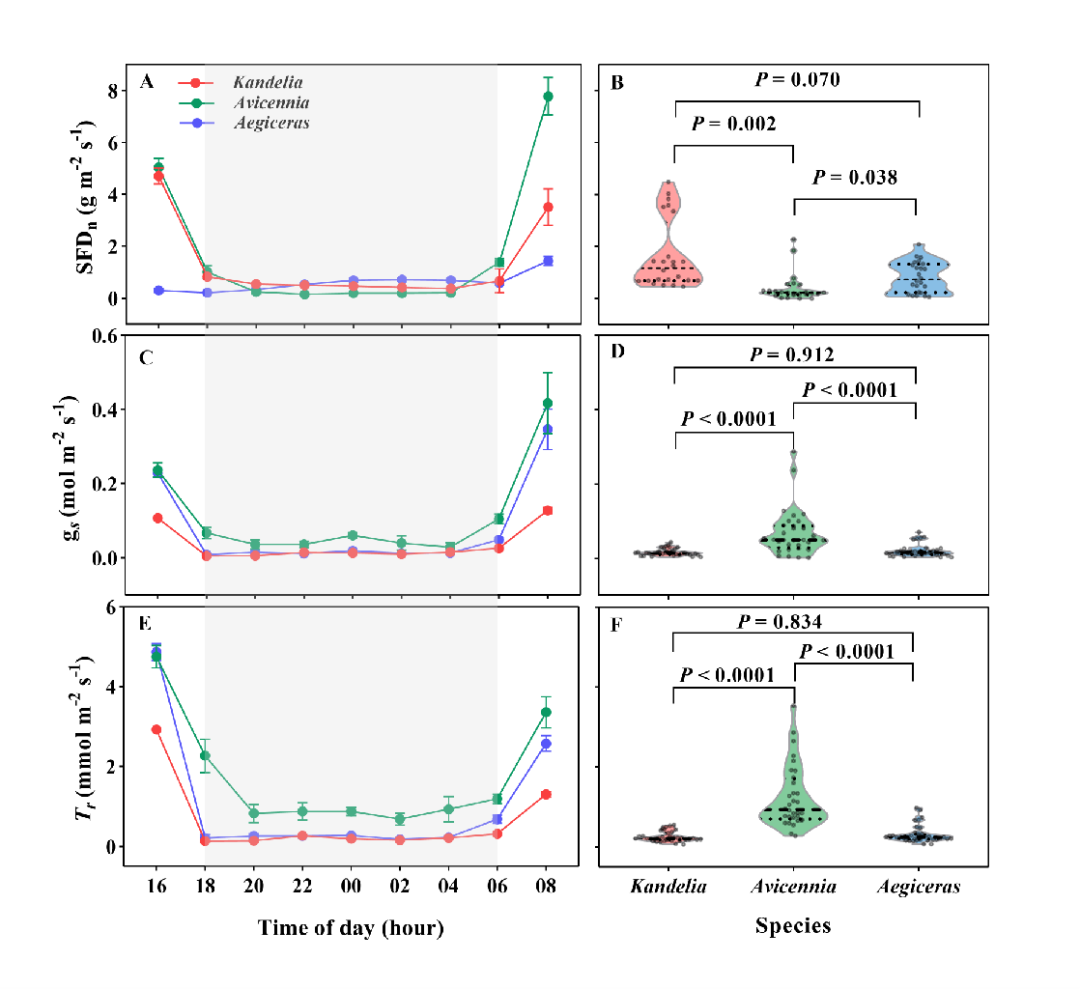Sipan Wu , Xiaoxuan Gu , Yanghang Zheng and Luzhen Chen *
Frontiers in Plant Science
Doi: 10.3389/fpls.2023.1118970
Published: 5 May 2023
Abstract
As part of the plant water-use process, plant nocturnal sap flow (Qn) has been demonstrated to have important ecophysiological significance to compensate for water loss. The purpose of this study was to explore nocturnal water-use strategies to fill the knowledge gap in mangroves, by measuring three species co-occurring in a subtropical estuary. Sap flow was monitored over an entire year using thermal diffusive probes. Stem diameter and leaf-level gas exchange were measured in summer. The data were used to explore the different nocturnal water balance maintaining mechanisms among species. The Qn existed persistently and contributed markedly over 5.5%~24.0% of the daily sap flow (Q) across species, which was associated with two processes, nocturnal transpiration (En) and nocturnal stem water refilling (Rn). We found that the stem recharge of the Kandelia obovata and Aegiceras corniculatum occurred mainly after sunset and that the high salinity environment drove higher Qn while stem recharge of the Avicennia marina mainly occurred in the daytime and the high salinity environment inhibited the Qn. The diversity of stem recharge patterns and response to sap flow to high salinity conditions were the main reasons for the differences in Qn/Q among species. For Kandelia obovata and Aegiceras corniculatum, Rn was the main contributor to Qn, which was driven by the demands of stem water refilling after diurnal water depletion and high salt environment. Both of the species have a strict control over the stomata to reduce water loss at night. In contrast, Avicennia marina maintained a low Qn, driven by vapor pressure deficit, and the Qn mainly used for En, which adapts to high salinity conditions by limiting water dissipation at night. We conclude that the diverse ways Qn properties act as water-compensating strategies among the co-occurring mangrove species might help the trees to overcoming water scarcity.
